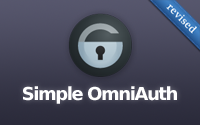Categories
- Active Record
- Active Resource
- Active Support
- Administration
- Ajax
- APIs
- Authentication
- Authorization
- Background Jobs
- Caching
- Code Walkthrough
- Controllers
- Debugging
- Deployment
- eCommerce
- Forms
- Mailing
- Models
- Performance
- Plugins
- Production
- Rack
- Rails 2.0
- Rails 2.1
- Rails 2.2
- Rails 2.3
- Rails 3.0
- Rails 3.1
- Rails 3.2
- Rails 4.0
- Refactoring
- Routing
- Search
- Security
- Testing
- Tools
- Views
Applied Filters:
gem x
MiniProfiler
MiniProfiler allows you to see the speed of a request conveniently on the page. It also shows the SQL queries performed and allows you to profile a specific block of code.
(9 minutes)
Sidekiq
Sidekiq allows you to move jobs into the background for asynchronous processing. It uses threads instead of forks so it is much more efficient with memory compared to Resque.
(10 minutes)
Image Manipulation
Learn how to do extensive image manipulation with the ImageMagick commands. Also learn how RMagick can be used in combination with CarrierWave to process uploaded images.
(11 minutes)
Memcached & Dalli
Memcached is an excellent cache store, and Dalli is the best way to interact with it through Ruby. Here I show various ways to use Memcached in a Rails app including how to set it up in production.
(12 minutes)
Ransack
Ransack allows you to easily build complex search forms. It also helps in adding sortable links and building a dynamic advanced search page.
(10 minutes)
Simple OmniAuth (revised)
OmniAuth makes it easy to do user authentication through a third party provider such as Twitter or Facebook. Learn a simple approach in this episode.
(11 minutes)
Devise (revised)
Devise is one of the most popular authentication plugins for Rails. Here I show how to set it up with a User model and configure the modules, views, routes, and more.
(8 minutes)
FnordMetric
FnordMetric allows you to chart events in real time. This is great for keeping track of user activity in your Rails app as demonstrated in this episode.
(10 minutes)
Mongoid
Mongoid is a polished, high-level Ruby gem for accessing MongoDB. Here I cover installation, adding fields, validations, associations, and keys.
(11 minutes)
More on Twitter Bootstrap
This episode continues on the Twitter Bootstrap project showing how to display flash messages, add form validations with SimpleForm, customize layout with variables, and switch to using Sass.
(12 minutes)










